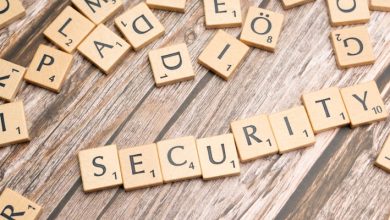What is Two-Factor Authentication (2FA) and Why You Need It

- Understanding the basics of Two-Factor Authentication (2FA)
- Enhancing your online security with Two-Factor Authentication (2FA)
- The importance of Two-Factor Authentication (2FA) in protecting your accounts
- How Two-Factor Authentication (2FA) works and why it’s effective
- Common misconceptions about Two-Factor Authentication (2FA) debunked
- Implementing Two-Factor Authentication (2FA) for better cybersecurity
Understanding the basics of Two-Factor Authentication (2FA)
Two-Factor Authentication (2FA) is a security process that requires two authentication methods to verify a user’s identity. This adds an extra layer of security beyond just a password, making it significantly more difficult for unauthorized individuals to access an account.
The first factor is usually something the user knows, such as a password or PIN. The second factor is something the user has, such as a mobile device or security token. By requiring both factors, 2FA greatly reduces the risk of unauthorized access, even if a password is compromised.
Implementing 2FA is a simple yet effective way to enhance the security of your online accounts. Many websites and apps offer 2FA as an option, and it is highly recommended that you enable it whenever possible. By doing so, you can better protect your sensitive information and reduce the likelihood of falling victim to cyber attacks.
Enhancing your online security with Two-Factor Authentication (2FA)
Enhancing your online security with Two-Factor Authentication (2FA) is a crucial step in safeguarding your personal information from cyber threats. By adding an extra layer of protection to your accounts, 2FA reduces the risk of unauthorized access even if your password is compromised.
Two-Factor Authentication (2FA) works by requiring two different forms of identification before granting access to your account. This typically involves something you know (like a password) and something you have (like a mobile device). By combining these two factors, 2FA significantly enhances the security of your online accounts.
Implementing Two-Factor Authentication (2FA) is simple and easy. Many online services and platforms offer 2FA as an option in their security settings. Once enabled, you will receive a one-time code on your mobile device whenever you attempt to log in. This code must be entered along with your password to access your account.
Overall, Two-Factor Authentication (2FA) is a powerful tool in protecting your online identity and data. By taking advantage of this additional layer of security, you can minimize the risk of falling victim to cyber attacks and keep your sensitive information safe and secure.
The importance of Two-Factor Authentication (2FA) in protecting your accounts
Two-Factor Authentication (2FA) is a crucial security measure that adds an extra layer of protection to your online accounts. By requiring two different forms of identification before granting access, 2FA significantly reduces the risk of unauthorized access to your sensitive information.
One of the key benefits of 2FA is that even if a hacker manages to obtain your password through phishing or other means, they would still need the second factor (such as a code sent to your phone) to gain access to your account. This additional step makes it much harder for cybercriminals to compromise your accounts.
Implementing 2FA is particularly important for accounts that contain personal or financial information, such as email, banking, or social media accounts. By enabling this security feature, you can minimize the chances of falling victim to identity theft, fraud, or data breaches.
Overall, the importance of Two-Factor Authentication (2FA) in protecting your accounts cannot be overstated. It is a simple yet effective way to enhance the security of your online presence and safeguard your valuable data from unauthorized access.
How Two-Factor Authentication (2FA) works and why it’s effective
Two-Factor Authentication (2FA) works by adding an extra layer of security to your online accounts. It requires you to provide two different factors to verify your identity, typically something you know (like a password) and something you have (like a code sent to your phone). This double verification process makes it much harder for hackers to gain unauthorized access to your accounts.
One of the reasons why Two-Factor Authentication (2FA) is so effective is because it significantly reduces the risk of unauthorized access. Even if a hacker manages to obtain your password, they would still need the second factor to successfully log in to your account. This added layer of security acts as a barrier, protecting your sensitive information from being compromised.
Furthermore, Two-Factor Authentication (2FA) helps prevent phishing attacks, where hackers trick you into giving away your login credentials. Since the second factor is usually something physical that only you have access to, like your phone or a security key, it’s much more difficult for cybercriminals to bypass this additional security measure.
Common misconceptions about Two-Factor Authentication (2FA) debunked
There are several common misconceptions about Two-Factor Authentication (2FA) that need to be debunked in order to understand its importance in today’s digital world.
- One misconception is that 2FA is too complicated to set up and use. In reality, many online services and apps offer straightforward ways to enable 2FA, such as sending a code to your phone or using a 2FA app.
- Another myth is that 2FA is not necessary for all accounts. However, any account that contains sensitive information or personal data should be protected with 2FA to prevent unauthorized access.
- Some people believe that 2FA is not effective in preventing hacks. While no security measure is foolproof, 2FA adds an extra layer of protection that can significantly reduce the risk of unauthorized access.
- There is also a misconception that 2FA is only for businesses or organizations. In reality, individuals can benefit from using 2FA to secure their personal accounts, such as email, social media, and online banking.
- Finally, some people think that 2FA is too time-consuming to use regularly. However, the extra few seconds it takes to enter a verification code is a small price to pay for the added security and peace of mind that 2FA provides.
Implementing Two-Factor Authentication (2FA) for better cybersecurity
Implementing Two-Factor Authentication (2FA) is a crucial step in enhancing your cybersecurity measures. By requiring users to provide two different authentication factors before gaining access to an account or system, 2FA significantly reduces the risk of unauthorized access.
One way to implement 2FA is by using a combination of something you know, like a password, and something you have, like a smartphone or a token. This dual-layered security approach adds an extra layer of protection, making it much harder for malicious actors to breach your accounts.
By implementing 2FA, you can ensure that even if a hacker manages to steal your password, they still won’t be able to access your account without the second authentication factor. This extra security measure goes a long way in safeguarding your sensitive information and protecting your online identity.
Overall, implementing Two-Factor Authentication (2FA) is a simple yet effective way to enhance your cybersecurity posture and protect your digital assets. By adding this additional layer of security, you can significantly reduce the chances of falling victim to cyber threats and keep your information safe from unauthorized access. So, don’t wait any longer – enable 2FA on all your accounts today to bolster your defenses and stay one step ahead of cybercriminals.



